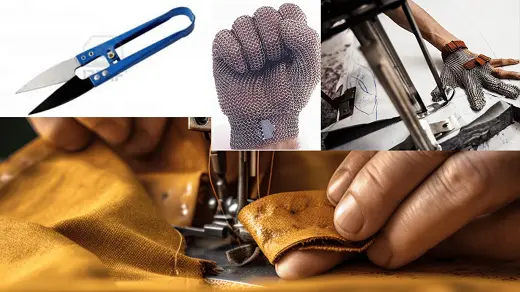Sharp tools are very dangerous for the garment industry. To ensure product safety, we have to control them properly. In this article, we will discuss Sharp Tools Control Procedures in the Garments Industry.
In the bustling world of garment manufacturing, precision and safety are paramount. From cutting fabrics to intricate detailing, the industry relies heavily on a plethora of sharp tools and equipment to achieve finesse in the final products. However, the use of these sharp tools comes with inherent risks that can pose safety hazards to the workforce if not managed properly. To mitigate these risks, garment manufacturers implement stringent sharp tools control procedures aimed at ensuring both safety and quality.

Sharp Tools Control Procedures in the Garments Industry
- Any metal pins, wires, or staples must not be used in any part of the production process for bundling, tacking, securing components, or packaging of any product.
- Meal pins must be excluded from all sampling and production areas, alternatives should be sought (e.g. Tape, adhesives, and clamps). This includes pins used for notice boards in the sewing room.
- Every employee of the factory is strongly prohibited from bringing, carry, storing, or using any personal sharp/metal tools or substance on the production floor.
- Required sharp/metal tools for a section should be controlled and stored by the concerned section supervisor in the designated sharp/metal toolbox.
- During the starting period of the working day, a supervisor will distribute the sharp/metal tools to the worker as per process requirement by mentioning the recipient’s name, ID no, sharp/metal tools name, and quantity along with the recipient’s signature in the sharp/metal tool control record.
- During use, every sharp/metal tool should be tied with a piece of rope/cable in a way that if it is dropped, it shouldn’t fall on the floor and hang at least six inches above the floor.
- After distribution, the remaining sharp/metal tools should be kept in the sharp/metal toolbox and mentioned in the sharp/metal tool control record as stock.
- At the end of the working day, the section supervisor should collect all sharp/metal tools from workers as per the distribution list mentioned in the sharp/metal tool control record and ensure the identical opening and closing balance.
- If any sharp/metal tools are lost, the section supervisor should inform his superior immediately and stop the production of that area until it is found. Using a hand metal detector and magnet bar, search the sharp/metal tool until it is found.
- Any addition or deduction to the current sharp/metal tools stock of any section (if any) should be mentioned (with challan no.) In their sharp/metal tool control record.
- If any sharp/metal tools have broken or become out of order, they should be sent back and replaced from the store by keeping a record (with challan no.) In sharp/metal tool control record.
Conclusion
In the garment industry, where precision and safety go hand in hand, implementing robust, sharp tools control procedures is not just a regulatory requirement but a fundamental commitment to the well-being of the workforce and the quality of the products. By prioritizing safety measures, providing adequate training, and maintaining strict protocols, garment manufacturers can uphold a workplace culture that values both the efficiency of production and the protection of its most valuable asset—the workers.
- You would love to read : Needle Management Procedures in the Garments Industry.
- Job Responsibilities of Fire safety officer in the Garments
- Health and Safety Requirements in the Garments Industry
- C-TPAT Requirements and Procedure in Garments Industry
- Material Safety Data Sheet (MSDS) for Chemical in Textile and Apparel
- Product Safety and Regularity Defects in the Garments Industry
